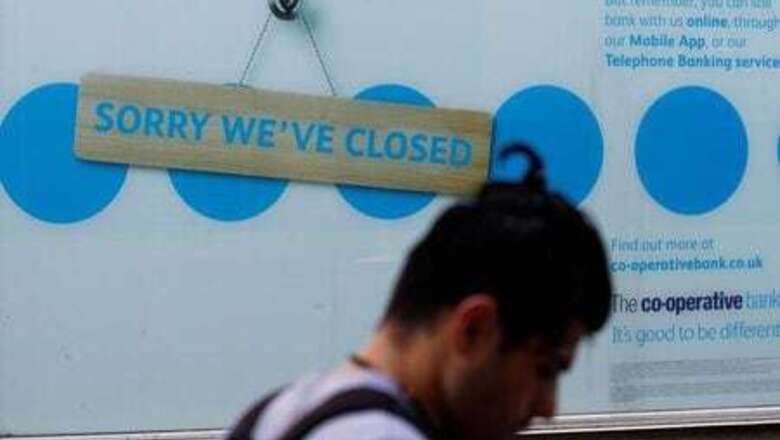
views
LONDON: Britain’s unemployment rate rose for the first time since the coronavirus lockdown began in March, sending a warning signal ahead of an expected surge in job losses when a huge government job subsidy programme expires next month.
The unemployment rate increased to 4.1% in the three months to July from the 3.9% it had clung to since early 2020, in line with the median forecast in a Reuters poll of economists.
The government’s coronavirus job subsidy scheme has shielded millions of workers and there were fewer job losses than feared in the figures published on Tuesday.
Redundancies increased by 48,000 on the quarter to 156,000, the biggest rise in over 10 years, but the level remained well below that seen during the 2008 downturn.
Samuel Tombs, an economist with Pantheon Macroeconomics, said job losses were likely to accelerate in September and October when employers will have to pay more towards the cost of the furlough scheme.
“The number of people searching on Google for phrases including ‘redundancy’ rocketed to a record high in July, consistent on past form with the official measure of redundancies peaking in September,” he said.
A single-month estimate for the unemployment rate – which is more timely but less representative than the three-month data – jumped to 4.4% in July and an experimental weekly estimate hit 4.8% in the last week of the month.
Separate tax office data showed the number of staff on company payrolls fell by a monthly 36,000 in August.
That was more than job losses of 20,000 in July but still only a fraction of mass layoffs in April and May. The ONS had previously reported 114,000 job losses for July, but revised this down sharply after receiving more data.
Overall, the payroll numbers fell by 695,000 between March and August – lower than the previous estimate for job losses between March and July.
Similarly, official data for the three months to July showed a much smaller-than-expected fall in the number of people in employment of 12,000, a tenth of the Reuters poll forecast.
However, the Office for National Statistics said its figures might be “slightly impacted” by a change in the way it interviews households since the COVID-19 pandemic swept Britain.
The surveys, which now rely on telephone calls rather than face-to-face interviews, over-represent homeowners who are less at risk of unemployment, the ONS said.
Sterling briefly rose after the data was published.
The Bank of England has forecast that the unemployment rate will hit 7.5% at the end of this year, when it is expected to expand its bond-buying stimulus programme again.
PRESSURE ON SUNAK
Finance minister Rishi Sunak said protecting jobs and helping people back into work was his “number one priority”.
He is under pressure to come up with new forms of support for workers as his job protection programme is wound down, such as subsidies targeted at workers in sectors most hit by social distancing rules.
“We want the government to step up urgently now,” Frances O’Grady, general secretary of the Trades Union Congress, told BBC radio.
“Sadly the pandemic isn’t scheduled to end in October, nor should the support for jobs and livelihoods.”
The number of job vacancies rose to 434,000 in the three months to August, about 30% higher than in the April-to-June period but almost half their level before the pandemic.
Companies in sectors such as tourism and high-street retailers have announced major job losses. London’s City Airport said on Monday it needed to cut up to 239 jobs or 35% of its staff, echoing expected staffing reductions at Heathrow.
Britain’s biggest domestic bank Lloyds is making 865 redundancies.
Disclaimer: This post has been auto-published from an agency feed without any modifications to the text and has not been reviewed by an editor

















Comments
0 comment